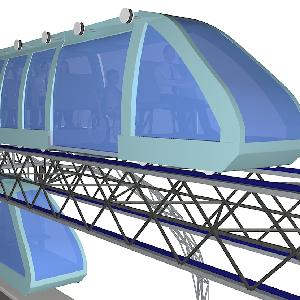Please find below the
Semi-Finalist Evaluation
Judges'' comments
Judge 1:
Yet another elevated rail proposal. The designs are typically extremely expensive and always greatly underestimated by their proponents.
Judge 2:
Very interesting idea, well thought through. Especially applicable for cities which build an entire public transport system (or parts of a system) from scratch. A few thoughts from my side: (1) With the current design, I see issues with system redundancy. As such, I would like to know what happens with the system if a train breaks down on a track somewhere. It's a relevant failure mode and it could severely impact on acceptance. Sure, there are 2 tracks (1 up, 1 down), but how much space does a switch take? How many can you build in? Taken together with low capacity, this might cause an issue. Please comment. (2) Capacity per train is low, so lots of infrastructure is needed for creating sufficient supply density, especially for peak hours. This might result in high system costs (not reflected in the cost per mile) and complexity (different lines etc.) Please discuss. Overall, it is a valuable concept, which offers lots of potential for reducing the carbon footprint of mobility in inner cities. Well thought through. I recommend streamlining the concept though.
 Emil Jacob Jun 14, 2016 12:11 | Proposal creator Added a table showing extrapolated costs. Included images detailing the unique features that make the cTrain optimal for minimizing visual impact on the urban landscape while maintaining semblance of mass transit modes in the traditional sense. The required weight for a cTrain per passenger is kept to a minimum as most materials are from light composites; and most of the weight being in the electric motors placed on the axles or the wheels. Regarding emissions reductions we can extrapolate that the energy needed per passenger will be less than the energy used (per passenger) by a golf cart. The cTrain blue prints, can include standards estimating the required solar and wind power (combined with storage technology) to allow the cTrain to run entirely on renewable energy. Vertical axis windmills as part of the stations can provide a means to add renewable energy more effectively. The image below includes an example of vertical axis windmill with "flappers" that close to capture wind power and open on the return to avoid resistance). Incorporating such wind mill-towers along the routes of the cTrain will help charge the storage especially during the night when demand is low.
|


